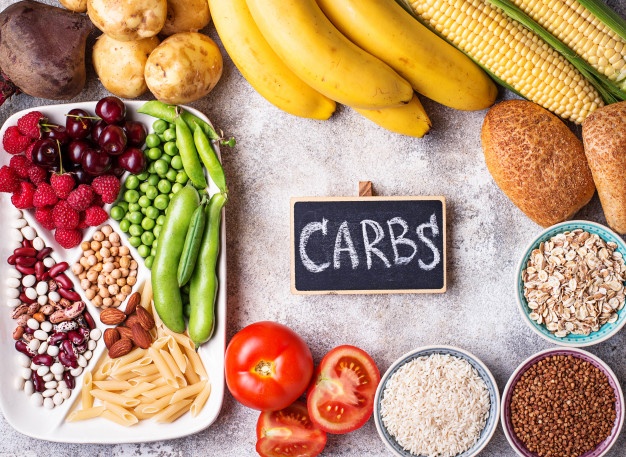
Carbohydrates sare the body’s foremost source of energy. Each gram of carbohydrate yields 4 kcal of energy. Carbs also play a role in the protection of muscle. When carbohydrate sources are depleted the body will then turn to its fat stores to produce energy. Glucose that is formed from carbohydrates is the only substrate which is used by the brain. This means that a deplation of this macronutriet will make one feel dizzy, light headed and forgetful.
Carbohydrates are classified as macronutrients. This means that they are one of the three main ways the body obtains energy, or calories. These macronutrients are called carbohydrates because, at the chemical level, because they contain carbon, hydrogen and oxygen.
There are a total of three macronutrients: carbohydrates, protein and fats. Macronutrients are vital for proper body functioning, and the body requires large quantities of them. All macronutrients need to be obtained through diet because the body is unable to produce macronutrients on its own.
What are simple carbohydrates?
Simple carbohydrate are higher in refined sugars, they contain empty calories (in other words are non-nutritious). Eating too many simple carbohydrates can cause you to crave certain foods and upset your energy levels.
This type of carbohydrate contains monosaccharadies which is glucose (blood sugar) and fructose which drives from fruits. It also contains disaccharides which are comprised of two monosaccharadies. The two most common are sucrose (table sugar) and lactose (derives from milk).
When sugar is consumed it either converts into:
- Glucose (quick energy)
- Glycogen
- Fat storage
Excess consumption of simple carbohydrates has a huge disadvantage for both athletes and the non-athlete:
- Simple carbohydrates are low in nutritional value
- Excess amounts of sugar are converted into fat
- Eating simple carbohydrates to excess causes insulin levels to fluctuate wildly so inhibiting activity in glycogen storage and synthesis.
What is a complex carbohydrate?
Complex carbohydrates are high in sugar but take a long time to absorb and digest. They keep blood and insulin levels stable so enhancing glycogen synthesis activity and increasing glycogen storage. Complex carbohydrates contain polysaccharadies which are composed of many glucose units. They are often referred to as starches which are found in vegetables, fruit and grains.
From the above two carbohydrate groups we then divide these further into three categories:
- Monosaccharides, e.g. glucose, fructose, galactose (simple sugars)
- Disaccharides, e.g. sucrose, maltose, lactose (simple sugars)
- Polysaccharides, e.g. starch, glycogen (complex carbohydrates)
The carbohydratesthat do not result in insulin fluctuations, because of slow digestion, have low glycaemic values.
What is the glycaemic index?
Carbohydrates that increase blood sugar quickly are said to be high on the glycemic index (GI), while those with a milder effect on blood sugar levels have a lower GI score.
Carbohydrates enter the bloodstream as glucose at varying rates.
- High-GI carbs move into the bloodstream quickly in the form of glucose
- Low-GI carbs move into at a slower rate as they take longer to digest and break down
In the long term, low-GI foods – in addition to exercise and regular sleep – are better for maintaining health and body weight.
Low GI carbohydrates are linked to:
- less weight gain
- better control of diabetes as well as blood sugar
- healthier blood cholesterol levels
- lower risk of heart disease
- improved appetite control
- enhanced physical endurance
We require carbohydrates for health , but they must be the right type of carbohydrate. Following a well-balanced diet, which includes unprocessed carbohydrates as well as getting enough sleep and physical activity – is more likely to lead to good health and an appropriate body weight as opposed to focusing on or eliminating a particular nutrient.





